|
|
|
|
| Western Antique Aeroplane & Automobile Museum (WAAAM) Hood River, Oregon July 2024 |
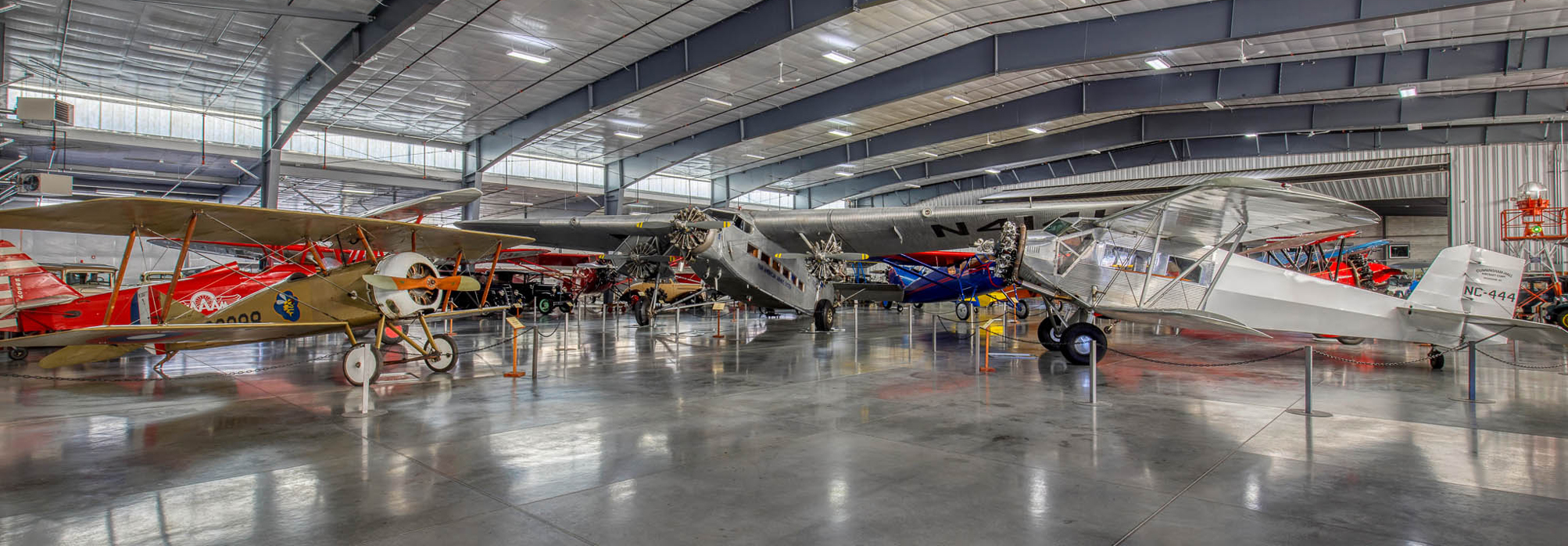 |
| Inside the main hangar |
| I met Terry Brandt Founder and President of this wonderful museum, he was very welcoming and clearly proud of his collection of wonderful veteran aircraft. After 50 years of collecting his aircraft, in 2006 he made the decision to donate them to a newly formed museum. It now must be one of the world's largest museum of civil aircraft mostly from the between the wars. More remarkable is that they are almost all currently flyable. I gather they have monthly flying events which combine with the equally impressive collection of vintage cars. The collection has grown over many years, some aircraft have been donated to the museum by their owners, knowing that they will be well looked after and appreciated by the museum's visitors. Many of the aircraft are quite rare. They also do restoration onsite although this area is not generally open to the public. Each aircraft has been meticulously restored from the inside out. |
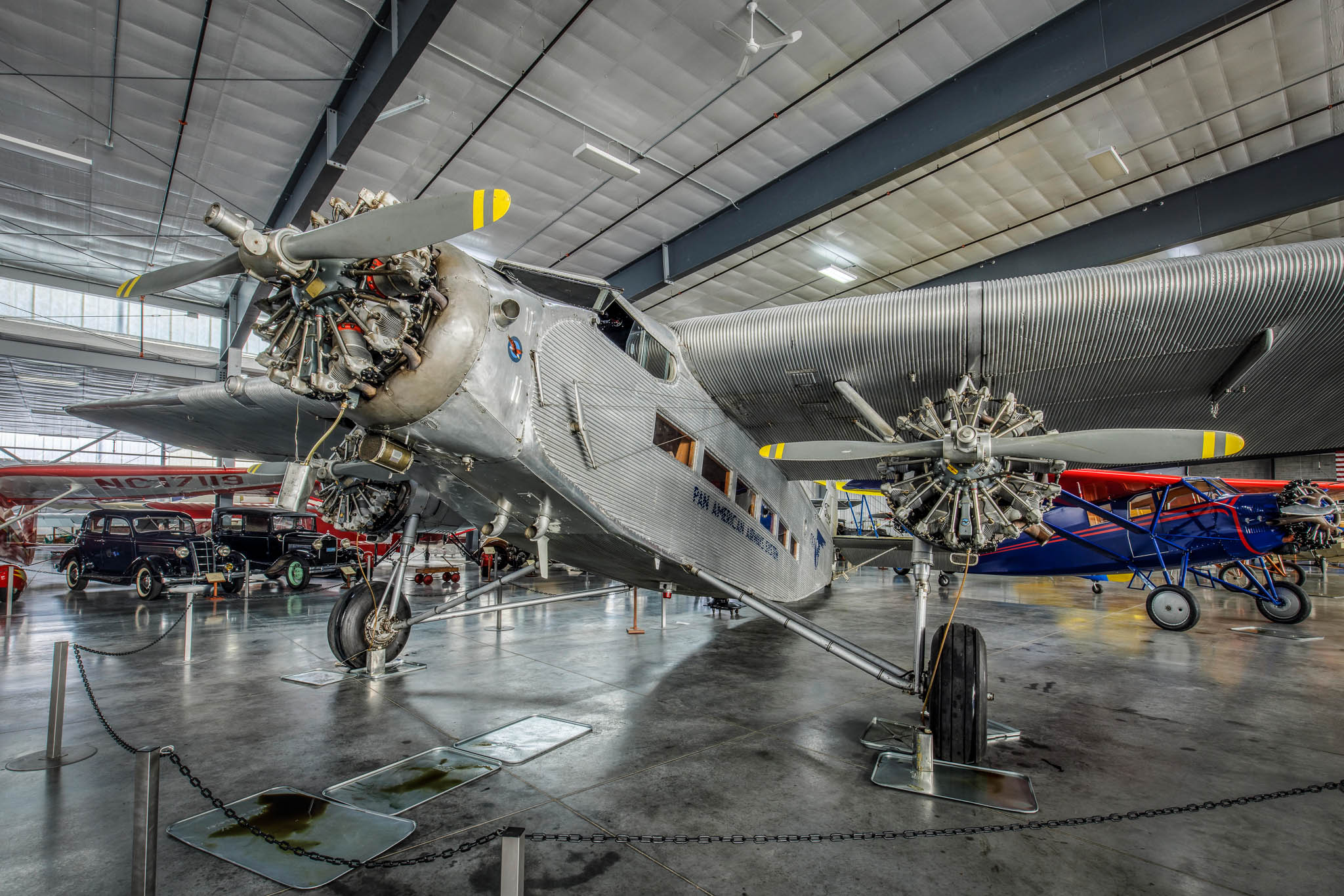 |
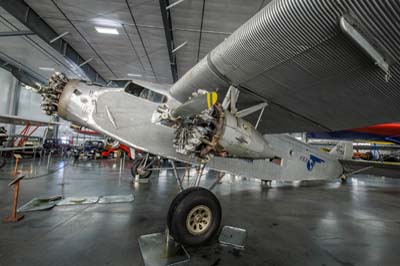 |
 |
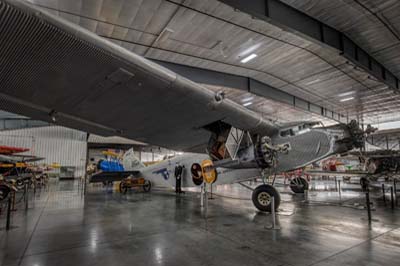 |
| Left to right: Ford Tri-Motor (N414H) in Pan American markings. It arrived at the museum in 2022. |
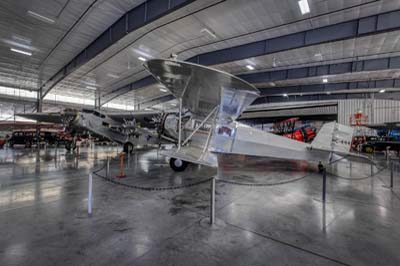 |
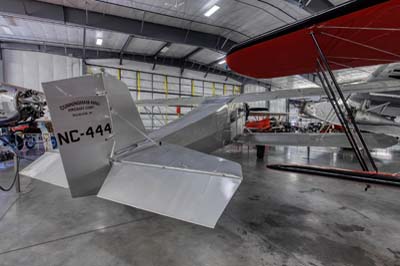 |
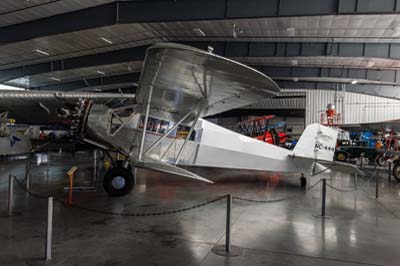 |
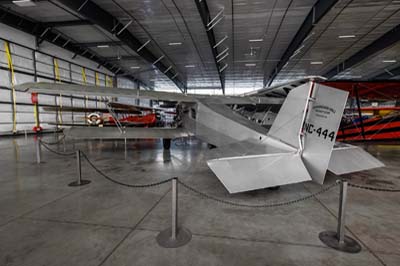 |
| Left to right: Cunningham PT-6F (NC444) from 1930. A six-seat biplane, one of two survivors, and the only flyable example. |
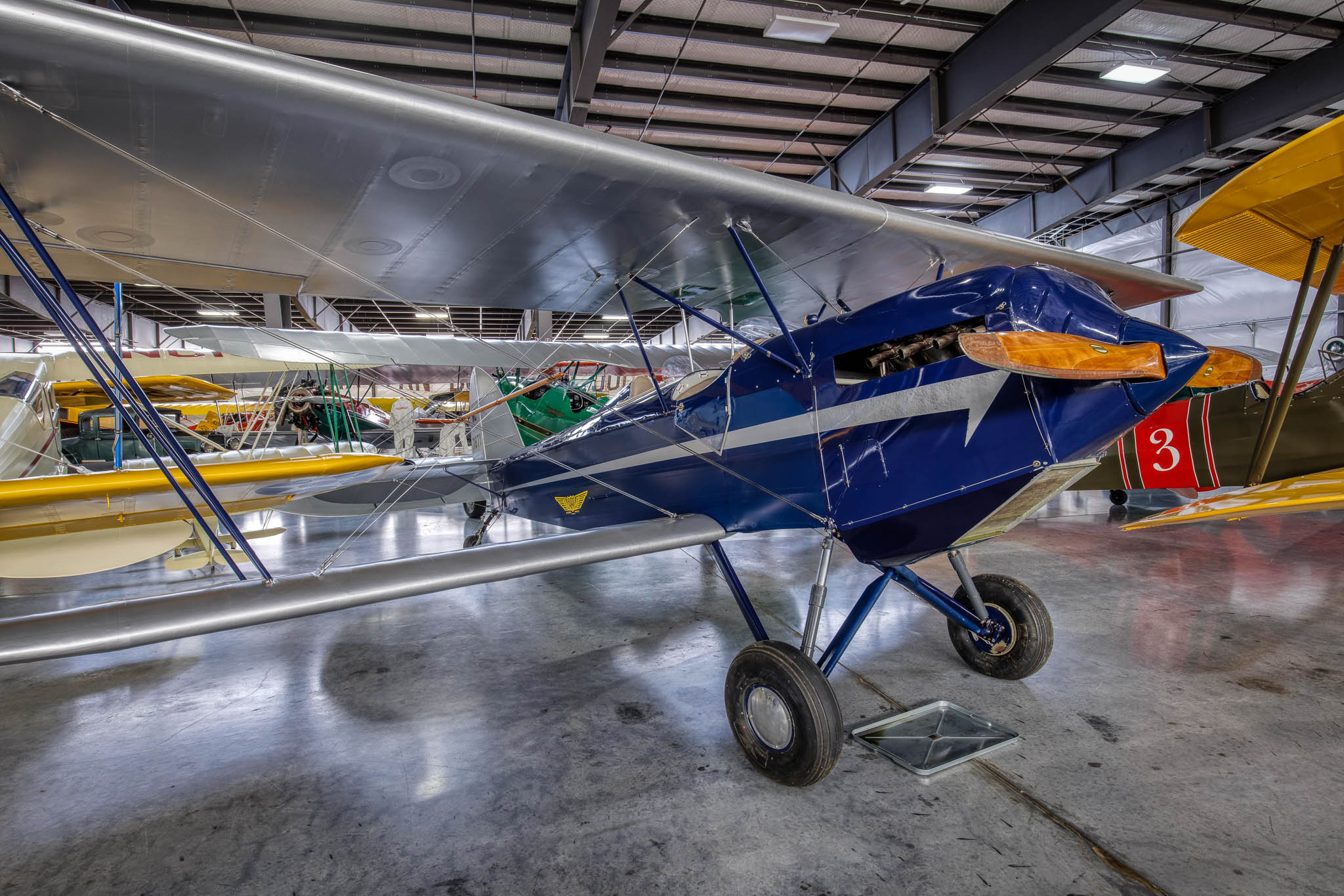 |
| Stearman 6L Cloudboy (NC788H '3') from 1930, Only seven were built, four of which were evaluated by the Army Air Corps as the YPT-9. |
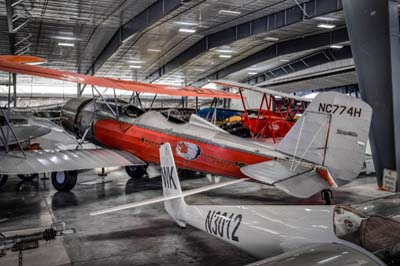 |
 |
 |
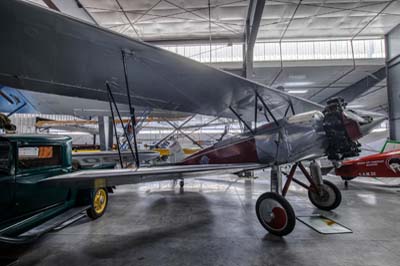 |
| Left to right: Stearman 4D Jr. Speedmail (NC774H) from 1931. Stearman C3-B (NC8830) from 1928. |
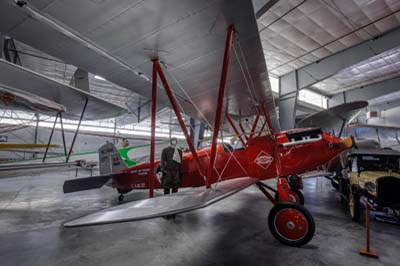 |
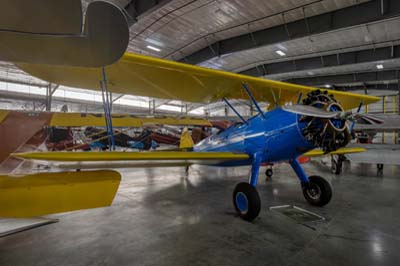 |
 |
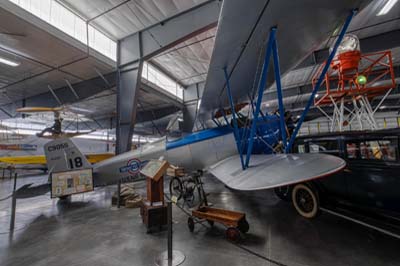 |
| Left to right: Stearman C3-B (NC3440 C.A.M.32) from 1928 'Mamer Air Transport, Spokane'. Stearman Model 75 Kaydet (NC571Y) from 1933. Stearman M-2 Speedmail (NC9055 '18') Inscribed 'Varney Airlines'. Built 1929 by the Stearman Aircraft Company of Wichita, Kansas to carry a pilot plus 1,000 lbs. of mail. It is the sole surviving M-2. |
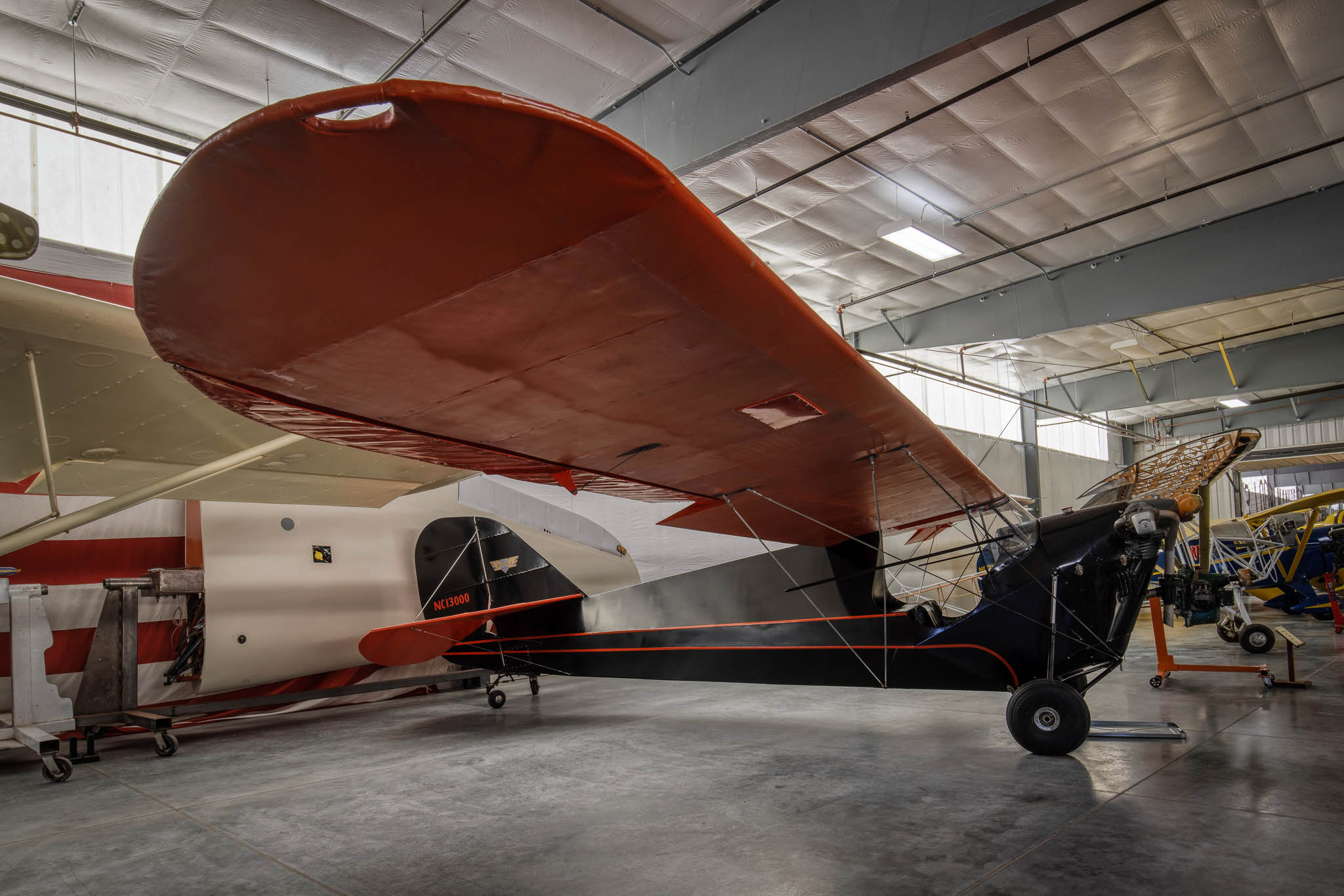 |
| Aeronca C-3 (NC13000) from 1932. |
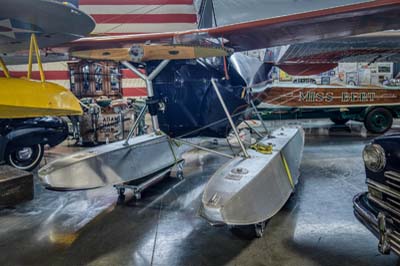 |
 |
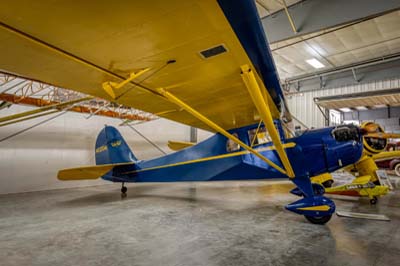 |
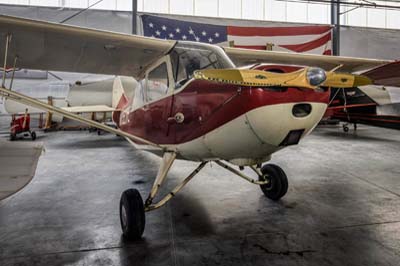 |
| Left to right: Aeronca C-3 (NC12423) from 1931, fitted with floats. Aeronca LC (NC17442) from 1937. Aeronca KCA Chief (NC21041) from 1938. Aeronca 7EC Traveler (N7567E) from 1958. |
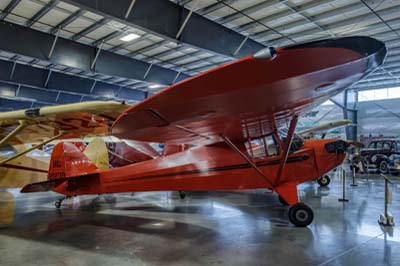 |
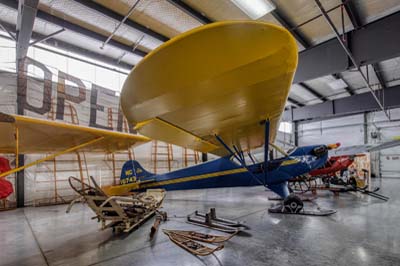 |
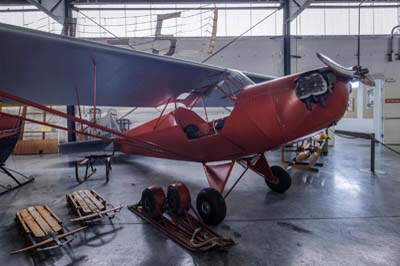 |
| Left to right: Taylorcraft BC-12-65 (L-2H) (NC21239) from 1941. The Taylorcraft B is an American light, single-engine, high-wing monoplane with side-by-side seating for two. Built in large numbers by the Taylorcraft Aviation Corporation of Alliance, Ohio, it became a popular general aviation aircraft during the late 1930s and early 1940s. Taylor J-2 Cub (NC16743) from 1936. Taylor E-2 Cub (NC12610) from 1931. |
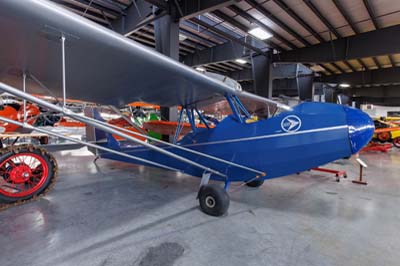 |
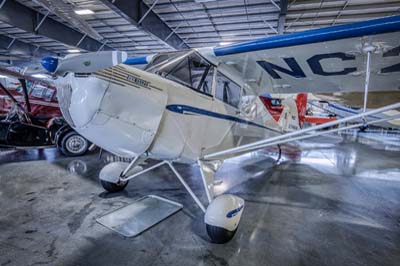 |
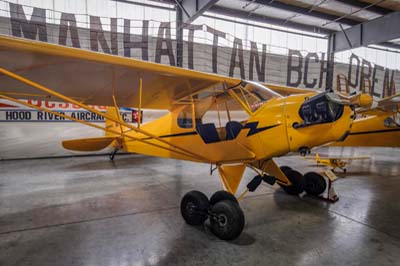 |
| Left to right: Piper J-3P Cub (NC21561) from 1938. Piper J-4A Cub Coupe (NC27868) from 1940. Piper J-3C-65 Cub (N30210) from 1940, exhibited with 'Whitaker tandem landing gear. |
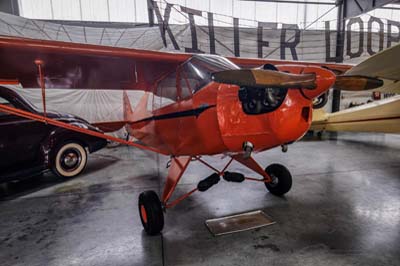 |
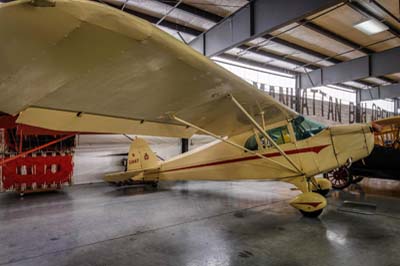 |
 |
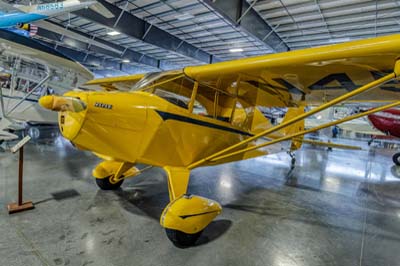 |
| Left to right: Piper J-5A Cub Cruiser (NC32607) from 1940. Piper J-4A Cub Coupe (N21867) from 1941. Piper J-3 Cub (NC20255) from 1940. Piper PA-15 Vegabond (N4559H) from 1956. |
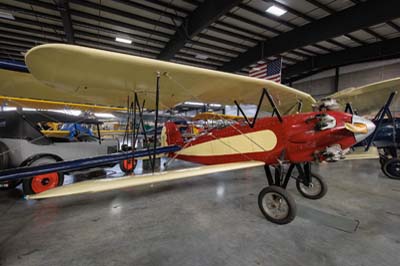 |
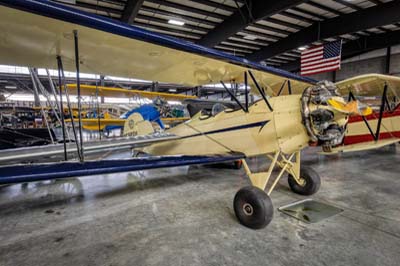 |
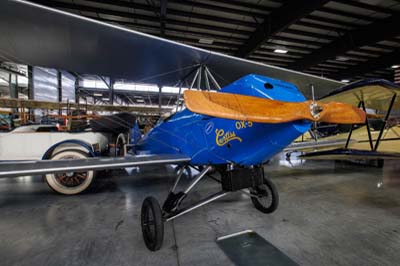 |
| Left to right: Great Lakes 2T-1A Sport Trainer (NC376H) from 1929. Fleet Model 7 (NC682M) from 1930. Fleet Aircraft was a Canadian manufacturer of aircraft from 1928 to 1957. In the 1930s, Fleet Aircraft produced the single-engine, two-seat Model 7 series—known as Fawn I (7B) and Fawn II (7C), as primary trainers for the RCAF. Built in Fort Erie, Ontario, these aircraft were praised for their excellent handling and ruggedness, helping raise Canadian pilot standards. A total of 31 Model 7Cs were built, with 43 Model 7Bs and 7Cs in service by 1939. The Fawns, along with the Fleet Finch, trained thousands under the British Commonwealth Air Training Plan and remained in RCAF service until 1947. Alexander Eaglerock Longwing (NC5075) from 1928. |
 |
| Curtiss-Robertson Robin B (NC8332) from 1928 as a joint venture of Curtiss-Robertson in Anglum (St. Louis) Missouri. This is an un-modified version. |
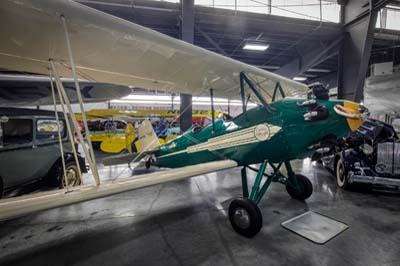 |
 |
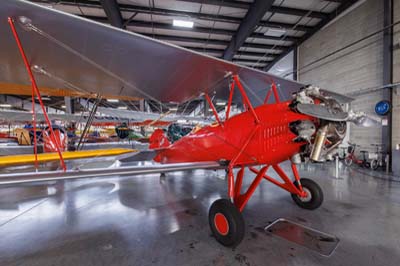 |
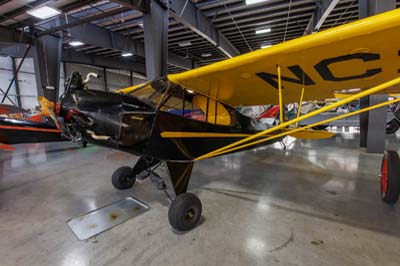 |
| Left to right: Curtiss Wright CW-12W Travel Air (NC11715) from 1931. Curtiss Wright 4-D Travel Air (NC448N painted as NS448N) from 1929. Curtiss Wright CW-1 Junior (NC671V) from 1931. |
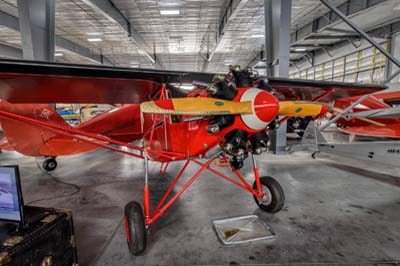 |
 |
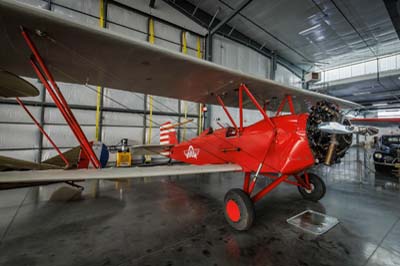 |
| Left to right: St Louis C2-60 Cardinal (NC31H) from 1929, two-seater only 22 examples built, this is one of two survivors. St Louis YPT-15 (NX106SC S.A.D.6) from 1940. New Standard D-25 (N930V) from 1930. |
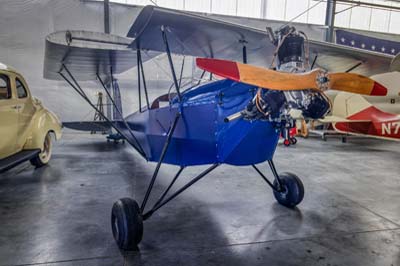 |
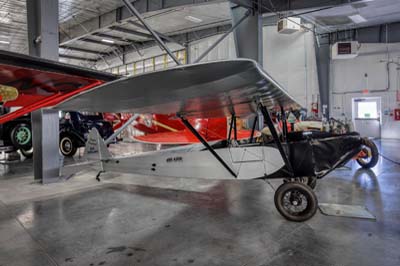 |
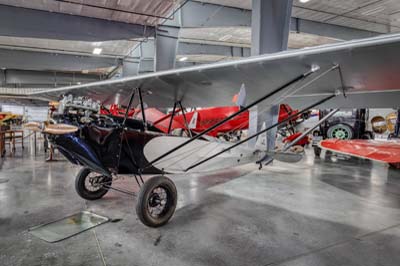 |
| Left to right: Nicholas-Beazley NB-8 (NC436V painted as NX436V) First flew in 1931, 57 examples were built by Nicholas-Beazley Airplane Company in Marshall, Missouri. Heath Super Parasol (NX2864A) from 1928 by Heath Aircraft Corp. |
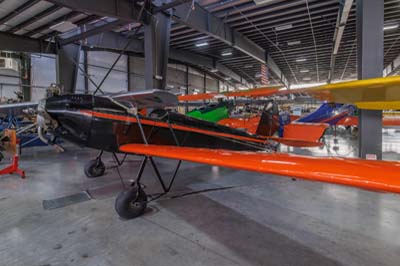 |
 |
 |
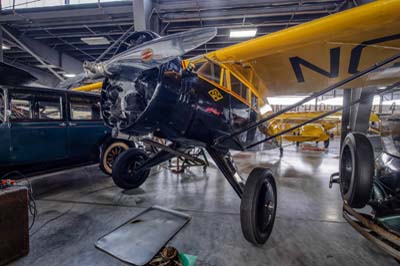 |
| Left to right: Spartan C-2-60 (N11016) from 1931. Buhl LA-1 Flying Bull Pup (NC365Y) from 1931 built by the Buhl Aircraft Company of Detroit, Michigan which was disolved in 1933 having built around 100 aircraft. Wallace Aircraft B.330 Touroplane (N276K) 'Walace Touroplane Chicago' from 1929, displayed with its starboard wing folded. So after landing, the owner could fold the wings and tow the aircraft home. General Airplanes Corp. Aristocrat (NC278H) from 1929. It is a sole survivor and arrived at the museum in 2017. |
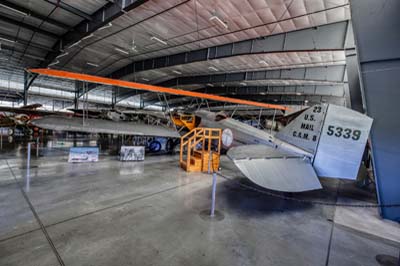 |
 |
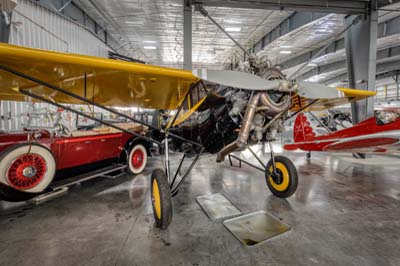 |
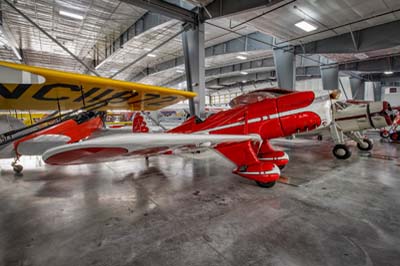 |
| Left to right: Boeing 40-C (N5339 '23' C.A.M.8) from 1928. It crashed near Canyonville, Oregon, the pilot Grant Donaldson survived but the only passenger was killed. The aircraft was recovered in 1996. After its restoration in 2000 it became the oldest Boeing still flying. Mono Aircraft Monocoach (NC11872) from 1929. The Monocoach Mono Aircraft Corp. Last survivor of 22 built. Ryan ST-A Special (NC17368) A high performance version of the ST-A, it started production in 1935 and won the 1937 International Aerobatic Championships. |
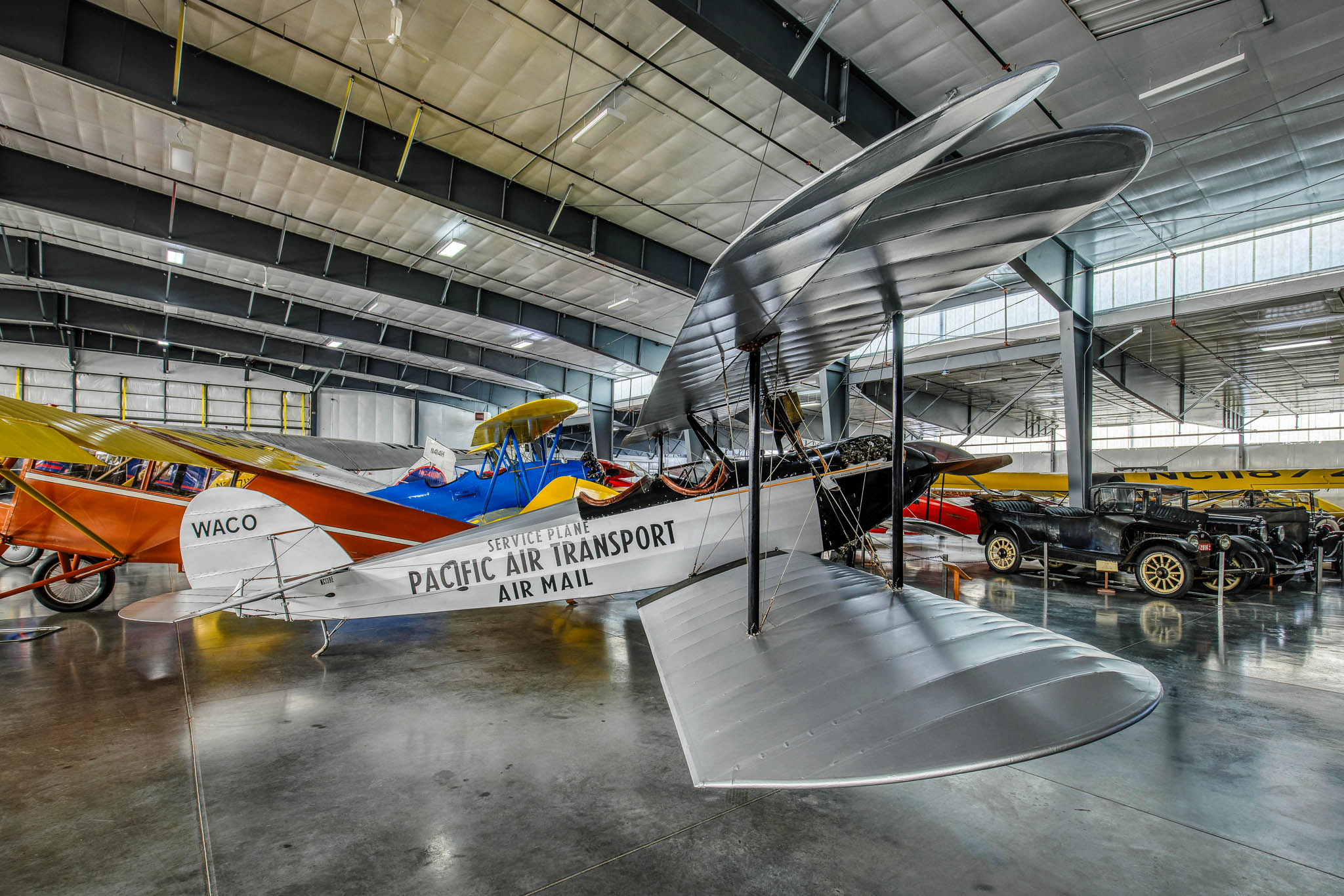 |
| Waco Nine (NC139E) Built by the Weaver Aircraft Company (WACO) from 1925 Pacific Air Transport, Serice plane, Air Mail. |
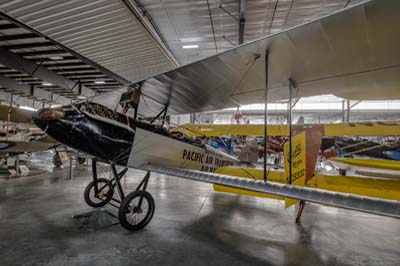 |
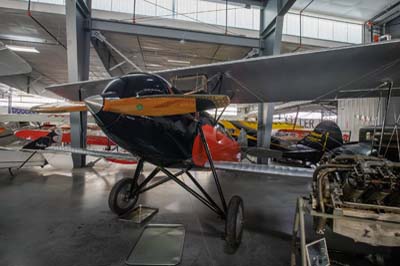 |
 |
| Left to right: Waco GXE (NC6513) from 1928. The Waco GXE was a 1928 variant of the Waco 10, an open-cockpit, three-seat biplane, distinguished by its Curtiss OX-5 engine. Waco's designation system changed at the time, and the GXE was the new designation for the Model 10. In Waco's designation system, The "G" stands for a straight wing (as opposed to a taperwing), the "X" for the specific engine type, and the "E" for its designation as the 10th model from the company. Waco GXE (NC7662) from 1929 Inscribed 'Linda Strong' who donated the aircraft to the museum. |
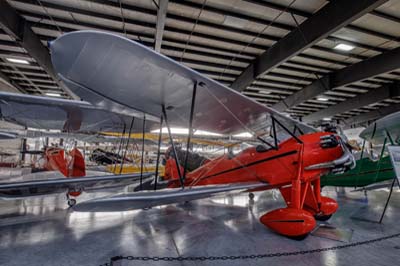 |
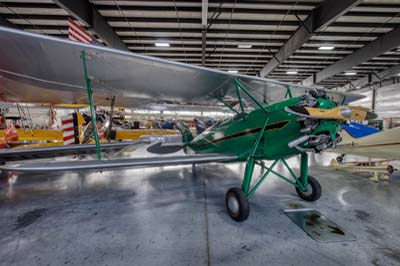 |
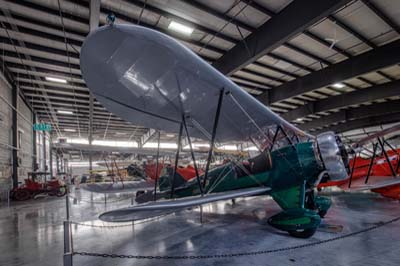 |
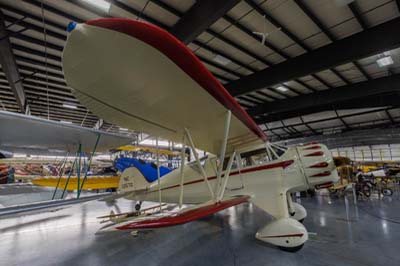 |
| Left to right: Waco INF (NC619Y) from 1930. Waco RNF (NC143Y) from 1931. Waco UBA (NC13041) from 1932. Waco UIC (NC13572) from 1933. |
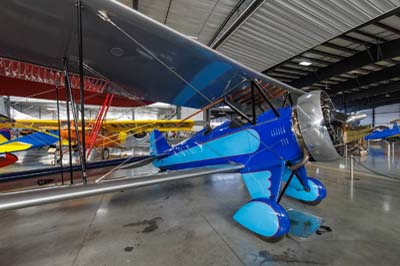 |
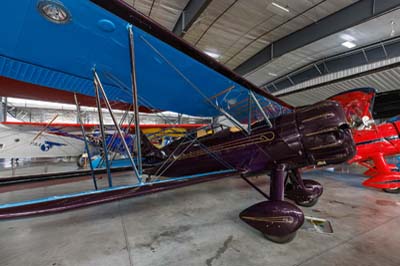 |
 |
 |
| Left to right: Waco UBF (NC13027) from 1932. Waco YPF (NC15700) from 1935. Another F series, with Y indicating 225hp Jacobs L-4MB, and P indicating custom cockpits, open or closed. Waco UPF-7 (NC32080) from 1941. Waco ATO (NC6714) from 1941. |
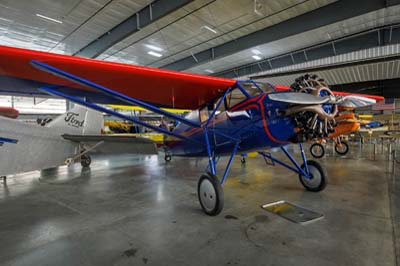 |
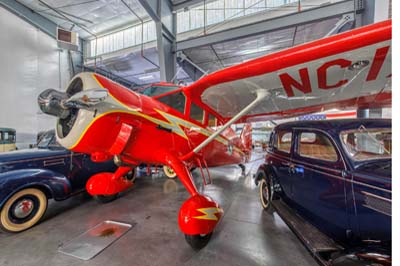 |
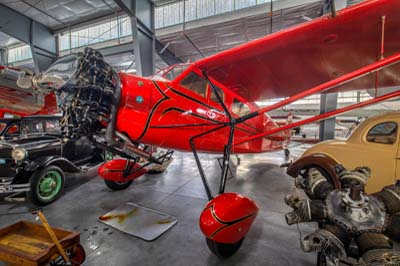 |
| Left to right: Stinson SM-8A (NC411M) from 1930 around 300 built. It was under restoration in 2021 till recently. Stinson SR-8B Reliant (NC17119) Alaska Airlines. The Stinson Reliant is a high-wing, single-engine monoplane designed to seat four to five people, built by the Stinson Aircraft in Wayne, Michigan. Between 1933 and 1941, a total of 1,327 Reliants were produced across various models ranging from the SR-1 to the SR-10. The final commercial version, the SR-10, was launched in 1938. Production of the Reliant can be divided into two main categories: the straight-wing models (SR-1 through SR-6) and the gull-wing models (SR-7 through SR-10). Stinson Model W (NC12146) from 1931. |
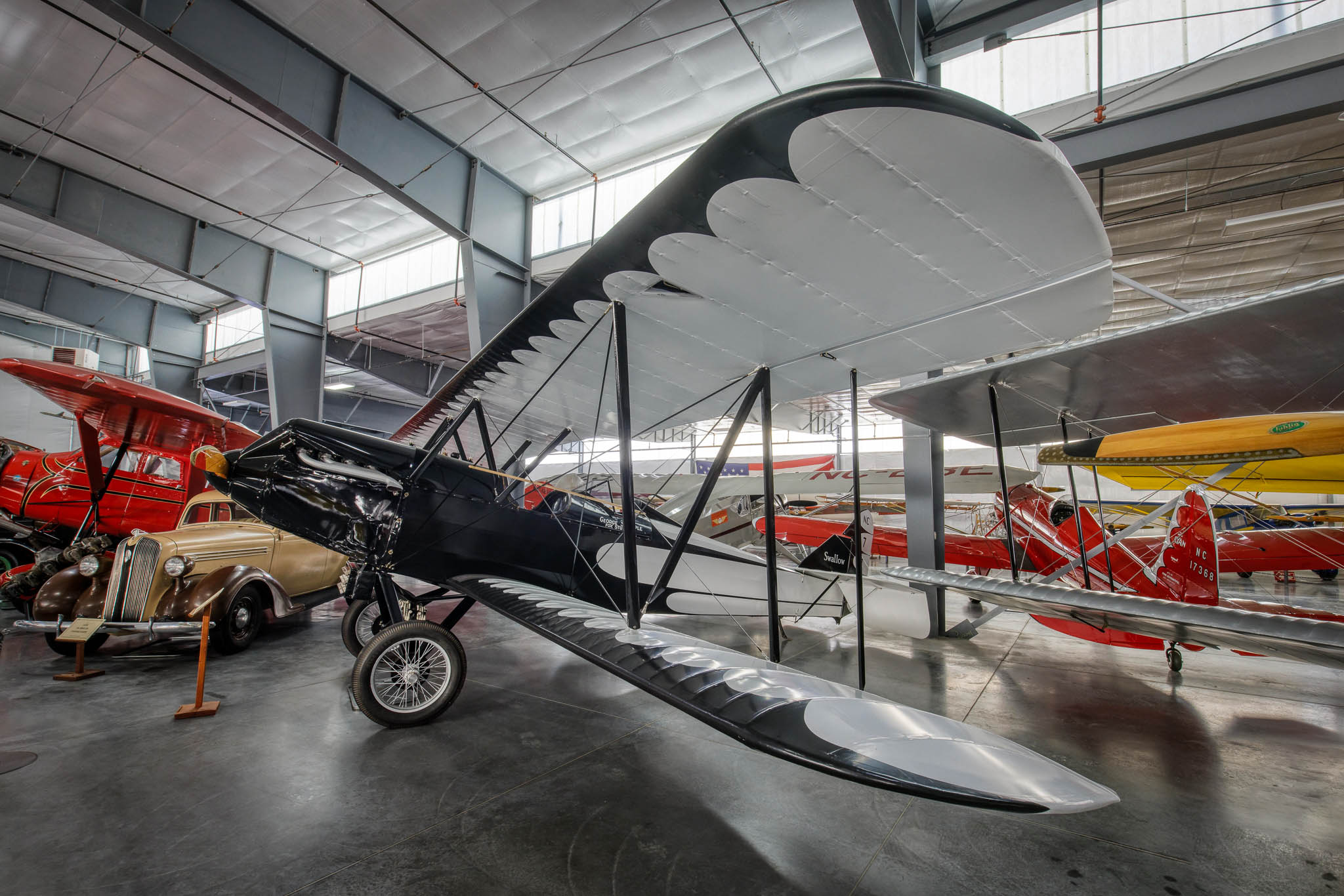 |
| Swallow OX-5 (NC7797) from 1927. |
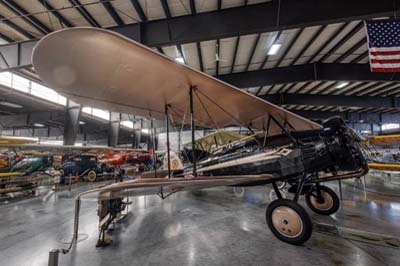 |
 |
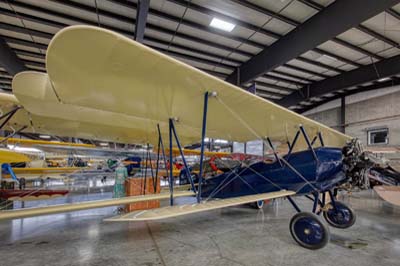 |
| Left to right: Laird LC-1B-300 (NC10402) from 1930, Laird Chicago Planes 'Offical Ship Air Tour' 'Wings of Progress II'. Travel Air W-4000 (NC9049) from 1928. |
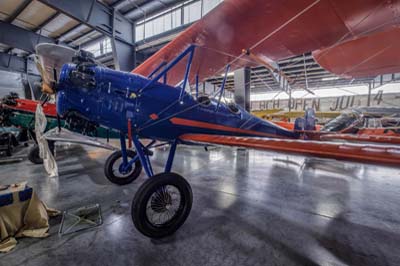 |
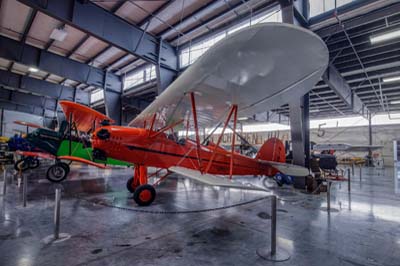 |
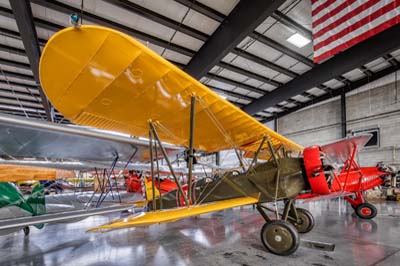 |
| Left to right: Lincoln Page PT-K (NC412M) from 1930. Brunner Winkle Bird CK (NC14K) Built from 1929 in Brooklyn by the Bird Aircraft Corporation (formerly Brunner-Winkle), the CK series was the company's third-generation biplane, originally designed around the Curtiss OX-5 engine. It was designed for barnstorming and passenger rides. Accommodating a pilot and up to three passengers via a fold-out jumpseat, it stood out with an upper wing twice the size of the lower and impressive efficiency—carrying equal or greater loads than competitors on half the horsepower of its predecessors. Brunner Winkle Bird A (NC787Y) from 1929. |
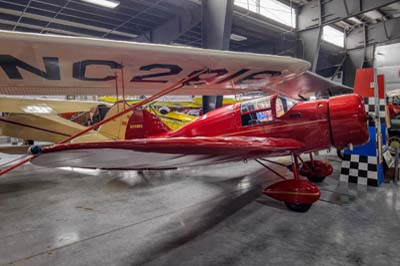 |
 |
 |
| Left to right: Dart Model G (N20993) from 1938, a two-seater originally sold as the Lambert Monosport. Arrow Sport Pursuit (N853H) from 1929. Pietenpol Sky Scout (N1933A). The Pietenpol Sky Scout followed the Air Camper designed by Bernard H. Pietenpol in 1929 as an affordable, do-it-yourself homebuilt aircraft, famously powered by a converted Ford Model A engine. Featured in the 1932 Flying and Glider Manual with the promise, "You can build her for $500," the plans enabled amateur builders to create their own aircraft, while Pietenpol himself built only a few for customers. Over 60 different engines have been adapted to the design, which remains largely unchanged from the firewall back. Remarkably, nearly a century later, Pietenpol's grandson still sells the plans—allowing anyone to build this classic plane today for just $75. This particular Air Camper is a modern homebuilt example. |
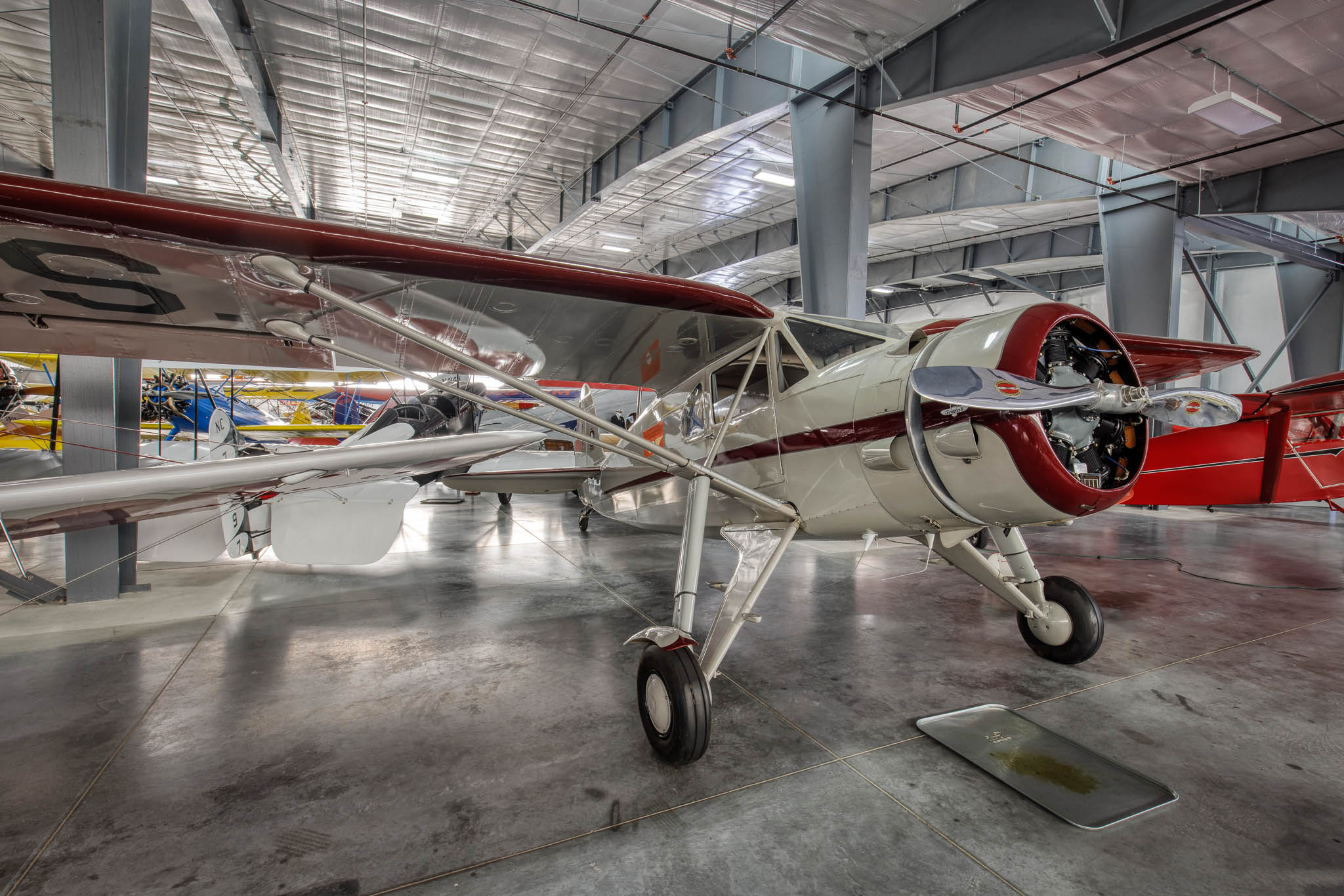 |
| Fairchild 24G (NC23E) from 1938. |
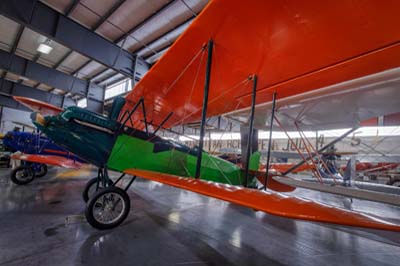 |
 |
 |
| Left to right: Fairchild KR-31 (Kreider-Reisner Challenger C-2) (NC327H) from 1929. Fairchild 22-C7A (NC2816) from 1933. Fairchild 22 C7B (NC12454) from 1932. |
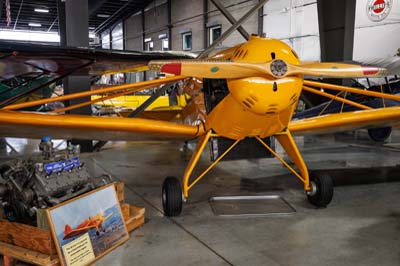 |
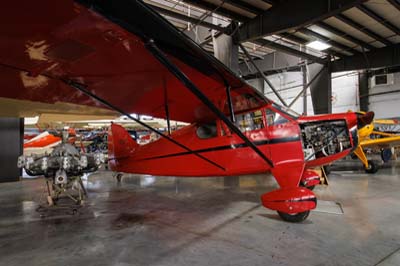 |
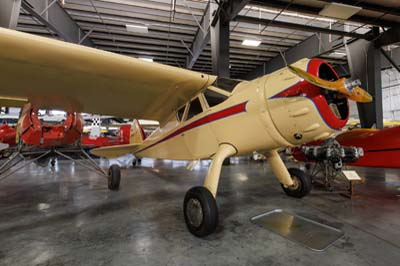 |
| Left to right: Arrow Sport F (NC17093) from 1936, it is powered by Ford Flathead V-8 automobile engine. Funk Model B (NC9000) from 1937 Originally built by the Akron Aircraft Company later renamed Funk Aircraft Company. Cessna C-165 Airmaster (NC25468) from 1940. |
 |
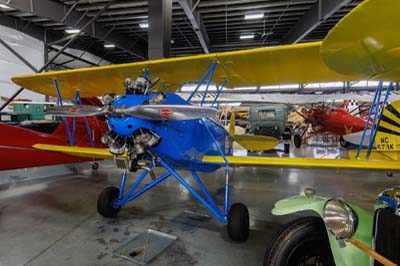 |
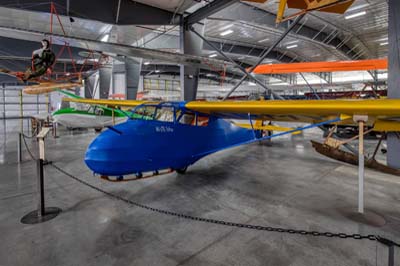 |
| Left to right: Inland S-300 Sport (NC573K) from 1929. Franklin Sport 90 (NC13271) from 1930. The Franklin Sport was a two-seat sport and training biplane built in the United States in 1930. Production ended in 1933 when Franklin Aircraft ceased operations. Frankfort TG-1A 'Cinema B' (42-52892) from 1942 ex US Army. |
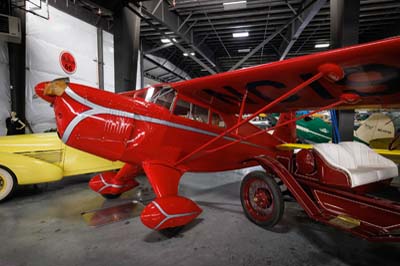 |
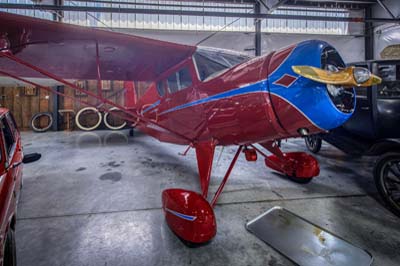 |
 |
| Left to right: Rearwin Speedster (NC19415) from 1938. Only 11 were built. Rearwin 8135 Cloudster (NC25545) from 1940. Rearwin 9000L Sportster (N18008) from 1937. |
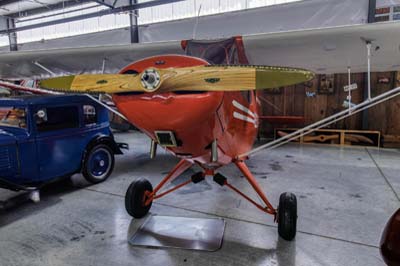 |
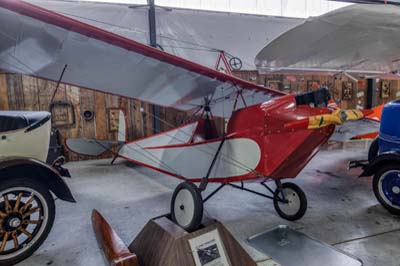 |
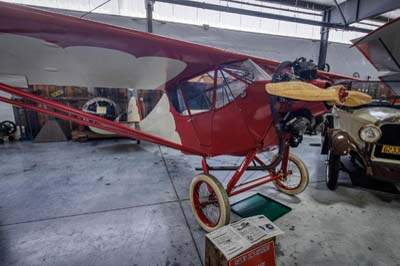 |
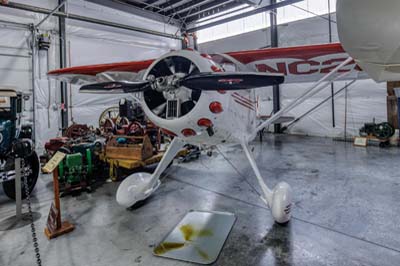 |
| Left to right: Porterfiled CP50 (N21973) from 1939. Long Henderson Longster III (N10115) from 1930. It is a modern homebuilt. Monocoupe 70 (NC6753), it was a well-known light aircraft from the "golden age" of aviation, recognized for its enclosed cabin, side-by-side seating, and Velie M-5 radial engine. Designed by Don Luscombe and manufactured by Velie, it was among the first successful airplanes created specifically for private pilots. Gaining a notable share of the 1928 market, the Monocoupe 70 featured a wood-frame fuselage and fabric-covered wings. The Velie Monocoupe production spanned from 1927 to 1929. Monocoupe 110 Special (NC2064) from 1937. |
| Military Aircraft |
 |
| Curtiss JN-4D 'Jenny' (1282). Its the oldest example still flying. The Curtiss JN 'Jenny' is a series of biplanes built by the Glenn Curtiss Aeroplane Company of Hammondsport, New York, later the Curtiss Aeroplane and Motor Company, produced as a training aircraft for the US Army and US Navy. Production began in 1915 and became North America's most well known aircraft of World War One, training 95% of student pilots in the US and Canada. A Jenny was used for the world's first radiotelephony from one aircraft to another and from ground to air and vice versa in test conducted in July and August 1917. Also, a Jenny was the first utilised for the US Air Mail in May 1918. The JN-4D model, on display, was the definitive version of the Curtiss JN series. Introduced in 1917, shortly after the United States entered World War One, it was one of several improvements Curtiss made to his aircraft design. Notably, the JN-4D replaced the earlier control wheel with a control stick to operate the ailerons, which were now located only on the upper wings. Around 35 Curtis Jennys survive today from a total of 6,813 built. |
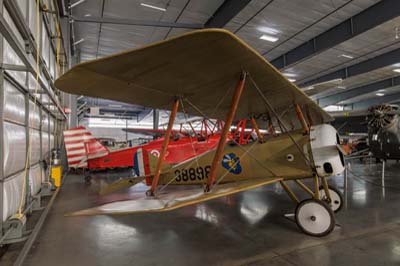 |
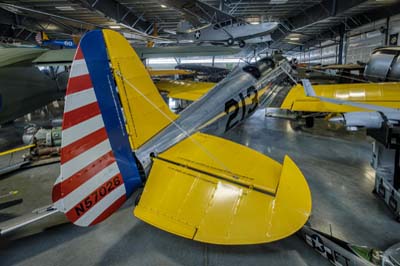 |
 |
| Left to right: Thomas-Morse S-4C Scout (38898 registered N3307T) from 1917. After the war, Scout 38898 was sold to the Wilson Aero Corp of Burbank. Roy Wilson was one of the chief pilots on the Howard Hughes' film 'Hell's Angels'. The Scout then went to Paul Mantz, and in 1936. While the records are incomplete, this S-4C was almost certainly used in films such as 'Dawn Patrol' and 'Hell's Angels'. Ryan ST-3KR Recruit (41-15735 '213' registered N57026) from 1942 ex USAAC. Naval Aircraft Factory N3N-3 'Yellow Peril' (2582 '27' registered N45042) from 1940 ex US Coast Guard. |
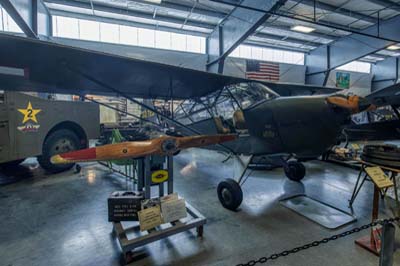 |
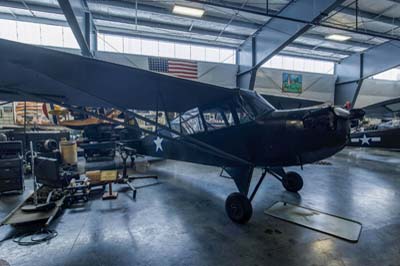 |
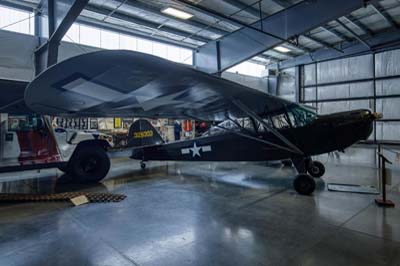 |
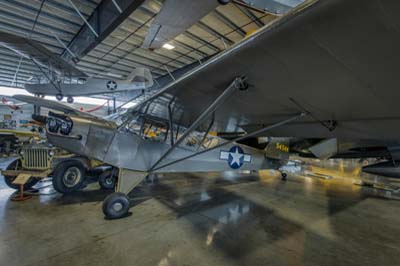 |
| Left to right: Interstate L-6 Grasshopper (43-2723) from 1943. Aeronca L-3B (O-58B) Grasshopper (42-14716 registered N47751) from 1942. Taylorcraft L-2M Grasshopper (42-26303 registered N3072Z) from 1943. Piper L-4J Grasshopper (45-4544 registered N1071N) from 1945. |
 |
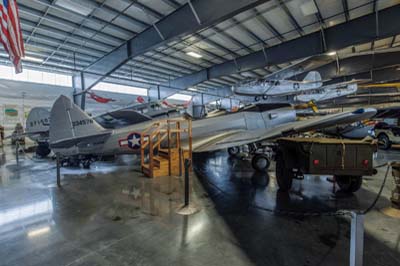 |
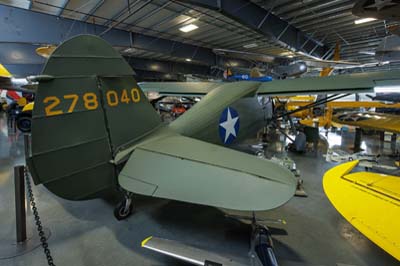 |
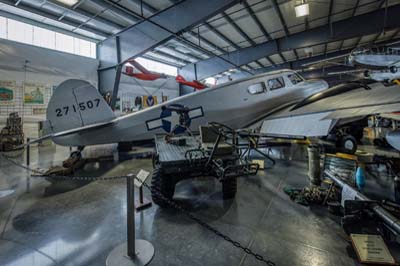 |
| Left to right: Aeronca 65-TAL Defender (N36874) from 1941. Fairchild PT-19B Cornell (42-34576 registered N56268) from 1943 ex USAAF. Fairchild C-61 Forwarder (42-78040) from 1940. Cessna UC-78 Bobcat (42-71507) from 1939. |
 |
 |
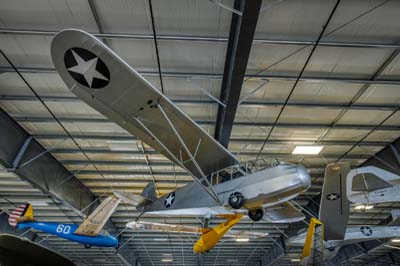 |
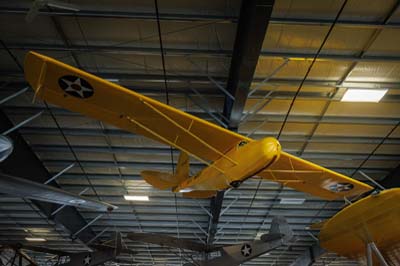 |
| Left to right: Schweizer TG-3A (42-53111 registered N60434) from 1942. Taylorcraft TG-6 (36430 registered NX39177) ex US Navy training glider from 1942. Piper TG-8 (43-3192 registered N46627) training glider from 1942. Franklin PS-2 Texaco Eaglet (registered N15195) from 1935 ex US Navy. |
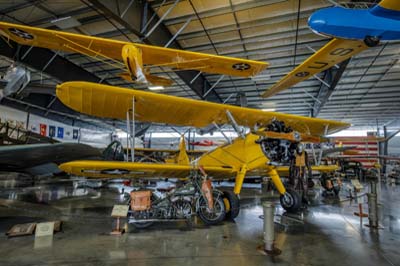 |
 |
 |
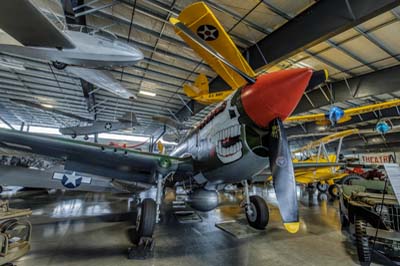 |
| Left to right: Stearman N2S-3 Kaydet (6333) from 1943. Boeing Stearman PT-17 Kaydet (42-16458 registered N450PW) from 1942. North American SNJ-6 Texan (52-8207 registered N2761A) from 1952. Curtiss P-40M Warhawk (42-104590 '44') from 1942. |
| The Restoration Hangar |
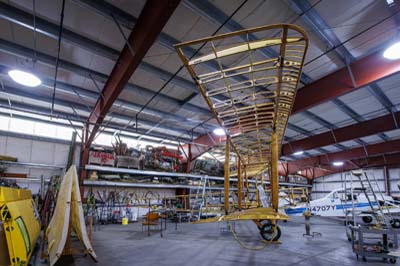 |
 |
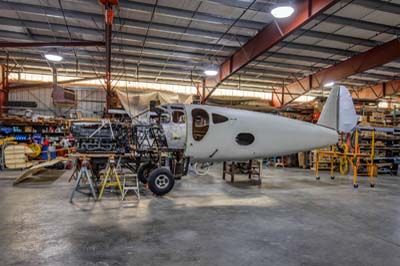 |
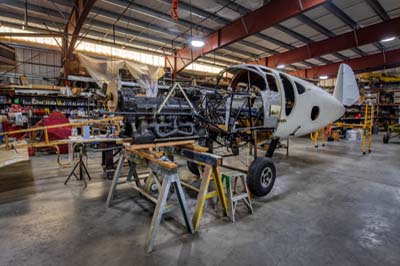 |
| Left to right: Standard Aircraft Co. J-1 (?) a two-seat primary trainer used by the US Army Air Service. The restoration is comprised of three aiframes. Mercury Aircraft, Baumann BT-120 renamed Mercury Aerobat (N33900) its the second prototype certified from 1941. The first BT-120 was test flown at Knoxville in late September 1940. Only three built before Mercury Aircraft ceased trading. Fairchild F-46A (N19131) built in 1939 by the Duramold Aircraft Corporation. |